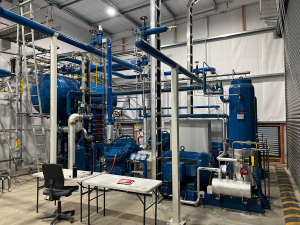Federated Farmers says all the hard work being done to improve freshwater quality is starting to pay off.
The National River Water Quality Trends released by Land, Air, Water Aotearoa (LAWA) shows many more sites improving than deteriorating; it takes into account all the river water quality parameters monitored for ten years.
“Lots of good things are going on -- urban and rural -- to help improve the quality of our waterways,” said Federated Farmers water and environment spokesperson Chris Allen.
“It is good news to see that the effort being made is starting to show results. We’ve just got to let some of that stuff bed in and keep all the good work going, because what we are doing is starting to work.”
He said the data confirmed what Federated Farmers had seen in other water quality reporting.
LAWA’s report, National River Water Quality Trends (2007 – 2016), follows a similar 10-year analysis released in 2015 by National Institute of Water & Atmospheric Research (NIWA).
The report said the change in nitrogen trends was particularly noteworthy, with significant progress in the number of improving sites versus the number deteriorating.
“We acknowledge that freshwater management processes take time, but these results show that by identifying where action is needed and working together catchment by catchment we can see results.
“We are not there yet and there is more work to do, but it is good to know that the work our communities are doing is making a measurable difference which we are starting to see,” said Allen.
LAWA is a partnership of New Zealand’s 16 regional councils and unitary authorities, the Cawthron Institute, the Ministry for the Environment and Massey University. Its aim is to help local communities find a balance between using natural resources and maintaining their quality and availability.
LAWA collates water quality data for 1500 sites monitored by the councils and supplements this with NIWA data. Sites are monitored for bacteria, clarity, phosphorus, nitrogen loading, etc.
The trends analysis was led by Cawthron Institute’s freshwater group manager and ecologist, Dr Roger Young.
While the trends for some parameters at many sites remains indeterminate, Young describes the overall picture as encouraging.
“Looking back from 2016 at a decade of data, for every monitored parameter more sites showed evidence of improving water quality than of degrading,” Young said. “My hope is this could represent a turning point in NZ’s river health story.
“[Though] this analysis gives us cause for optimism, water quality is just one indicator of river health and there is still more work to be done.”
Good payback
The chair of Local Government NZ’s regional sector and Bay of Plenty Council, Doug Leeder, also welcomed the report.
“A great deal of resource has been dedicated to freshwater management. This is a sign that actions by central and local government, landowners, businesses, iwi and communities are making a difference.
“Councils will continue to monitor and research their regions, to better understand their unique problems and work towards... improving the national trend.”


















